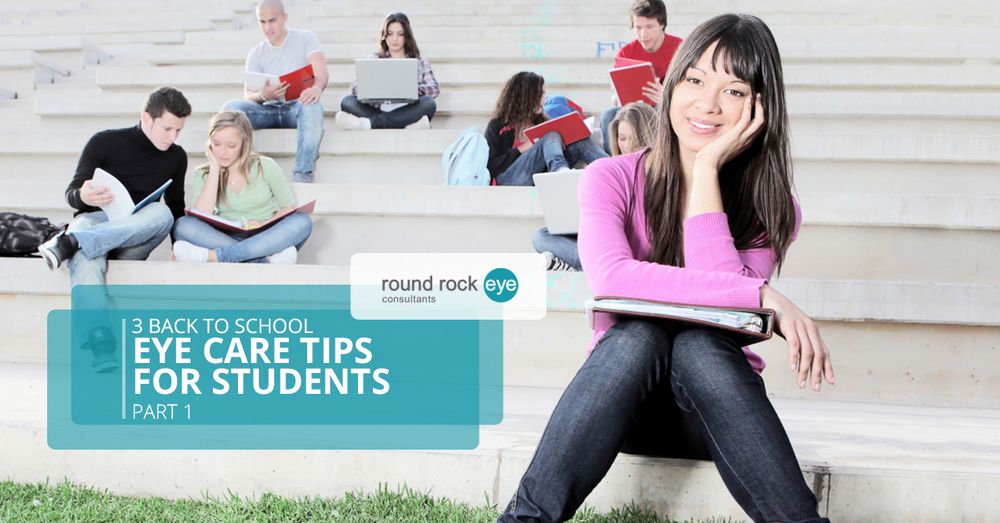In our recent post, we looked at some of the ways to relieve seasonal eye allergy symptoms, which are the common complaint of many in the Austin-area. With fall upon us, our focus is on eye health and vision care for all those kiddos that are now back to school. As children have adjusted to the new normal of early-rising and homework, it is important to keep your child’s eye health in mind. A child’s vision is one of his or her most valuable learning tools. Maintaining optimum vision health is key to optimum learning. Studies show that vision is the key to good learning because it improves recognition, comprehension, and retention.
Get Regular Eye Exams
The eyes allow us to view the world around us, and for children, good vision and eye health plays an important role in learning, development, and can affect a child’s academic success. Most schools provide eye tests at least once or twice a year; however, because eye tests may not take place right away, a child can go weeks without having any eye problems properly addressed. Rather, parents can be proactive in their children’s vision health by scheduling an eye exam before school starts, or ideally within the first few weeks of school. Scheduling your child for an eye and vision exam with our award-winning doctor, Dr. Joseph Meyer, is the best way to detect early signs of vision issues related to nearsightedness, farsightedness, eye strain, or blurred vision, so that the issue can be addressed and corrected accordingly.
Invest in Durable Eye Glasses
Many children with an early onset of vision issues benefit significantly from wearing eye glasses. For some families, finding the means to provide the proper eyewear can sometimes put a strain on the family budget; however, there are wonderful options for efficient, cost-effective eyewear for children. Because kiddos are generally adventurous, curious, and playful beings, eyeglasses can sometimes meet an early end due to consistent damage or rough handling. Parents can prolong the life of their child’s eyewear by investing in polycarbonate lenses with scratch-resistant and anti-reflective coatings. Generally, these lenses may help prevent breaking and unnecessary wear, which can reduce the need for frequent replacement.


